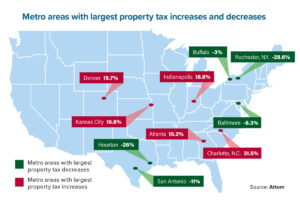The outbreak of COVID-19 changed the commercial real estate market nearly overnight, forcing states to lock down and delivering a major blow to the U.S. economy. All types of commercial properties have been affected. Early this past May, Doug Ressler of Yardi Matrix discussed the pandemic’s potential impact on the multifamily-housing sector, which was once believed to be nearly immune from an economic shock.
How might a downturn affect demand for rental housing?
The current pandemic’s effect on [commercial real estate] is two-phased. The first phase will be to get through this very challenging current situation where so many people are on the sidelines due to stay-at-home directives. The second phase will occur when we move into a more traditional recession and slowdown, caused by higher-than-normal unemployment. In the real estate areas most affected by unemployment, you will see some impact in terms of occupancy levels and rents, but you will also see the benefit of no new construction and very low interest rates based on stimulus support.
What about rental prices?
Under the best circumstances, owners will impose minimal or no rent increases. There will be an increase in deferred payments and some tenants will negotiate free rent periods. I would expect rent growth to be flat or slightly negative in most markets. Metro areas whose rents are likely to be most impacted are those dependent on tourism or energy, and markets that have expensive rents that will be difficult for workers that lose their jobs.
The GSEs are a lot more active on the debt front than they were in 2008, so the debt markets will have some continuity.
Is multifamily better positioned now to weather a shock than during the Great Recession?
It’s too early to say. In general, debt will be purchased at a discount. Then some rescue-capital needs will be addressed. In addition, you will then see, in some instances, special servicers begin to take over distressed assets. The GSEs (government-sponsored enterprises) are a lot more active on the debt front than they were in 2008, so the debt markets will have some continuity. The federal government is willing to intervene with aid much more than it did in 2008. Occupancies are going into this downturn at high levels, at 95% nationwide.
How about financing opportunities?
Capital markets quickly have become unstable and thus, rates and terms change essentially overnight. Those capital sources that did not immediately head to the sideline for a 30- or 60-day pause tightened their lending for projects that they were willing to finance, with the result being reduced leverage and increased borrowing rates. Borrowing rates initially increased on the order of 100 basis points or more as lenders turned their focus away from new business and increased their attention to how their existing loan portfolios might weather the impacts of this pandemic.
Do you expect many apartment complexes to be sold due to distress?
Expect the pace of asset sales to slow because of the pandemic, and the pace of raising new capital will probably slow. The downturn will create some distress. Step one will deplete reserves, then you’ll begin to see assets trade. This same scenario happened in 2001 and 2008. That first year after the shock is generally slow in terms of deployment. It is not a great time to sell assets. Debt funding is difficult to attain because there is a lot of uncertainty. •





